Search Images
Browse Content (p. 1316)

Image
Europa & Zeus
A red-figure vase depicting the abduction of Europa by Zeus, disguised as a bull. 350-340 BCE.
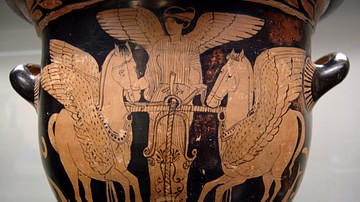
Image
Dawn or Eos
A red-figure vase depicting Eos or Dawn riding her chariot across the sky. 430-420 BCE. (Staatliche Antikensammlungen, Munich)
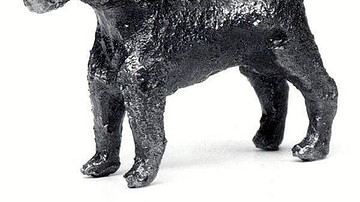
Image
Dog Figurine from Nimrud
Bronze statuette of a dog, part of the Nimrud dogs, a Neo-Assyrian collection of dog figurines found at Nimrud, currently on display in museums at Baghdad, Iraq; Cambridge, England; New York, America, and Melbourne, Australia. Metropolitan...
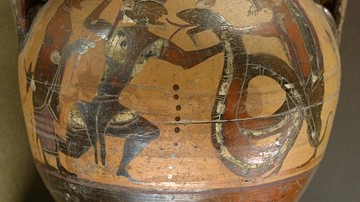
Image
Cadmus Slaying the Dragon
A scene from a black-figure vase of the Phoenician founder of Thebes Cadmus slaying the dragon which dwelt there. From Euboea, 560-550 BCE.
Louvre Museum, Paris.
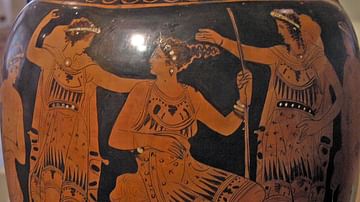
Image
Atalanta
A scene from a red-figure vase depicting Atalanta holding a spear and Meleager during the Calydonian Boar Hunt of Greek mythology. 400-375 BCE. (National Archaeological Museum, Athens)
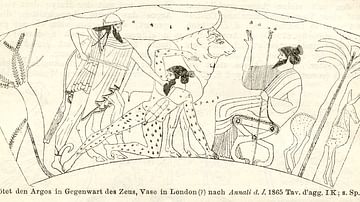
Image
Argus Panoptes
A sketch of a scene from a Greek 5th century BCE red-figure vase depicting the slaying of the one-hundred eyed monster Argus Panoptes by Hermes. (British Museum, London)
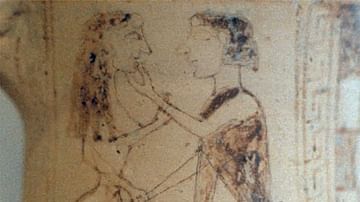
Image
Ariadne & Theseus
A scene from a 7th century BCE Cretan jug depicting Ariadne and Theseus. (Archaeological Museum of Heraklion, Crete)
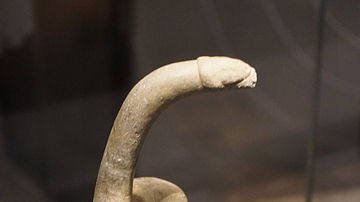
Image
Bird Shaped Pestle
A bird-shaped pestle. Stone, 6000-2000 BCE. Oro Province, Papua New Guinea. Most modern vegetables and cereals were first cultivated around 10,000 years ago. This pestle was made for grinding taro, one of the crops farmers in Papua New...
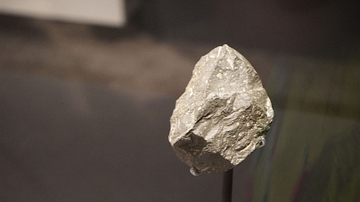
Image
Olduvai Stone Chopping Tool
Stone chopping tool. 1.8 - 2 million years old. Found in Olduvai Gorge, Tanzania. This chopping tool is an example of the oldest known objects deliberately made by humans. This tool was found with the fossil remains of an extinct human...
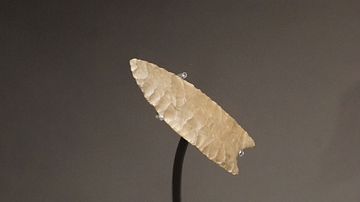
Image
Clovis Spear Point
Clovis spear point. Flint, 13,000-14,000 year old. Found in Arizona, United States of America. Clovis points were the most widespread evidence of a successful settlement in North America by fully modern humans about 14,000 years ago...